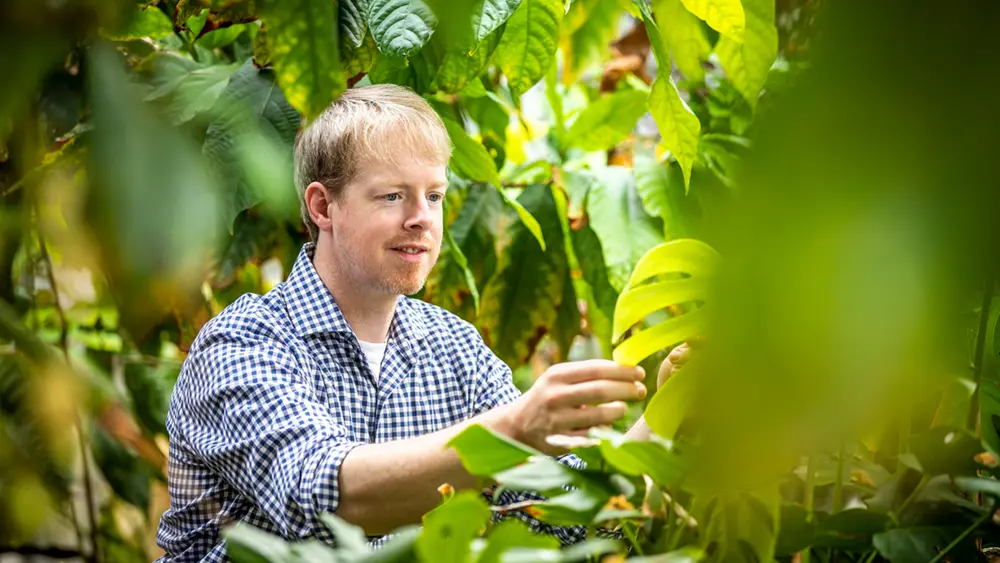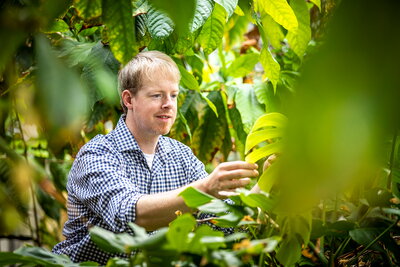
Like many ecological scientists, University of Illinois Urbana-Champaign plant biology professor James O’Dwyer has spent much of his career searching for ways to measure and predict how specific plant communities will fare over time. Which species in a diverse population will persist and coexist? Which will decline? What factors might contribute to continuing biodiversity?

Photo by Michelle Hassel
In a new study reported in the journal Nature, O’Dwyer and his colleague, U. of I. graduate student Kenneth Jops, report the development of a method for determining whether pairs or groups of plant species are likely to coexist over time. Using data from published studies, their approach reliably predicts the complementary life histories of pairs of plants that – while competing for many of the same resources – manage to thrive in a shared habitat.
The method relies on the painstaking collection of years of data about each species, O’Dwyer said.
“Over the last 50 or so years, people have gathered more and more data about plant life histories, your death rates, your reproductive rates, how many seeds you’re producing, how quickly you grow into the next life stage – and all of that can be changing throughout your lifespan,” he said. “And we write this as a matrix that roughly describes all those aspects of life history – and it’s different for every species.”
Read the full article at the Illinois News Bureau